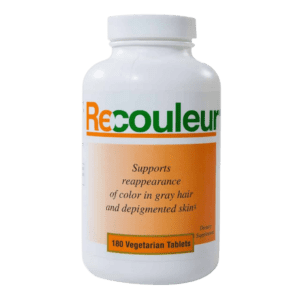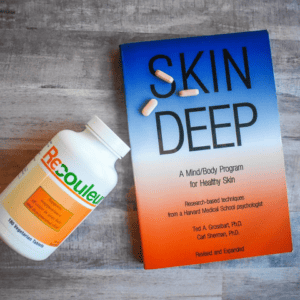Vitamin therapy is not new science when it comes to treating skin conditions. Discover the science behind vitamin therapy for vitiligo in our latest book The Use of Vitamin Therapy for the Treatment of Vitiligo. Studies including a 1931 case as the forerunner to vitamin therapy for vitiligo are the foundation of vitamin treatment.
This book is ideal as a support for individual sufferers, such as VanStockum herself, and as a tool for dermatologists, general practitioners, dermatology nurses. Written in clear, compassionate language,this book lays out the role vitamins play in managing vitiligo. It draws on a host of studies and scientific findings, dating back to the 1931 case study considered to be the forerunner to vitamin therapy for vitiligo.
Want to know more about the scientific evidence of vitamins in managing vitiligo? Here is a sampling from our book.
According to a 1945 retrospective review of vitiligo treatment by Dr. B.F. Sieve, a 1931 case was a forerunner to vitamin therapy for vitiligo. Trim and Sequeira reported a case of a black man with vitiligo who had a fracture that required a 16-week hospital stay. It was observed that the white patches on his face were repigmenting, although no therapy had been administered directly for that. The authors attributed this to three potential factors: bed rest, absence of direct sunlight, and most importantly, more nutritious food. Many small studies date back to the late 1930s and 1940s discuss the successful use of various vitamins and alternative medicine to treat vitiligo.
Historically, the relationship between vitamin C and pigmentation was suggested by Cornbleet in 1937 and Riehl in 1938. In 1977, Ratnam and others discovered that patients with vitiliginous skin on their legs had a reduced mean value of ascorbic acid in that area.
Several studies uncovered an association between vitiligo, vitamin B12, and folic acid. One such study concluded as recently as 2012. The findings suggest nutritional deficiency in these vitamins and elevated Hcy are precipitating factors in the pathogenesis of vitiligo in predisposed individuals. The authors recommended vitamins B6, B12, and folic acid be added to vitiligo treatment protocols.
According to the chapter “Vitamins and Vitiligo” written by Evridiki Tsoureli-Nikita, Claudio Comacci, Giovanni Menchihi, and Torello Lotti in the book Vitiligo Problems and Solutions edited by Torello Lotti and Jana Hercogova published in 2004, “Vitamin therapy has proven to be useful and leads to satisfactory repigmentation when applied consistently and in appropriate dosages.”
This brings us to the most current writing published late 2015. The Handbook of Vitiligo: Basic Science and Clinical Management by Iltefat H. Hamzavi, Bassel H. Mahmoud, and Prescilia N. Isedeh has a chapter on the topic entitled “Nutrition in Vitiligo” by Mohammed Al Jamal and Iltefat H. Hamzavi. They cite studies demonstrating the benefits of vitamins for vitiligo as well as a study that showed no benefit.
In some vitiligo patients, varying degrees of repigmentation may occur or the progression of vitiligo slowed when pigment cells are stimulated with vitamin therapy.





